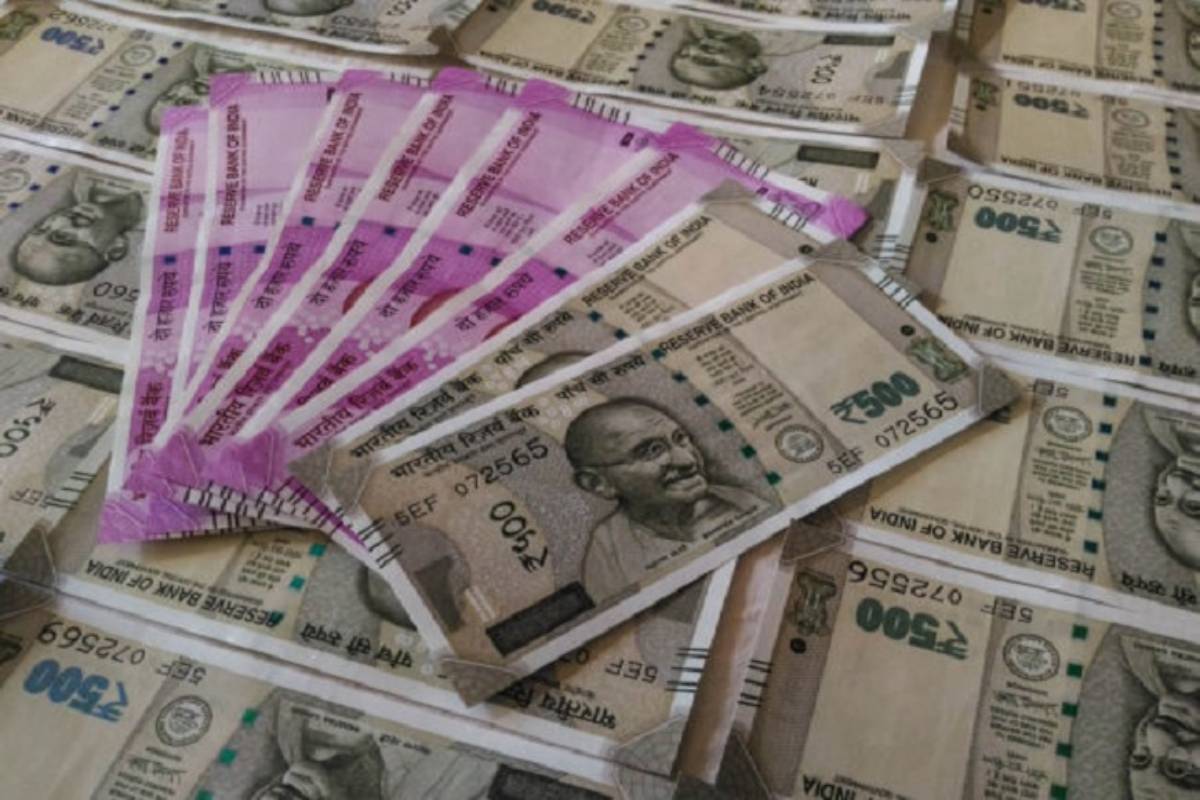Foreign investors selling Indian equities due to ‘profit booking’: Nirmala Sitharaman
Union Finance Minister Nirmala Sitharaman Monday said the foreign institutional investors (FII) are selling Indian equities lately due to the profit booking.
For the first time in a decade, the dollar reached its highest value in the first half of the year 2022, buoyed by various conflicts among countries and the Russia-Ukraine war.

(Representational Image)
While the country was gradually inching back on track after being mangled by the pandemic followed by a series of lockdowns, the Indian rupee hit an all-time low against the U.S. dollar in early trade on Tuesday recording at 80.05 per dollar, further deteriorating the economy.
For the first time in a decade, the dollar reached its highest value in the first half of the year 2022, buoyed by various conflicts among countries and the Russia-Ukraine war. Ever since the war started in Ukraine, followed by the rising price of crude oil, the rupee has steadily lost value against the dollar.
Advertisement
The country is already grappling with high inflation and weak growth now this fall of the rupee has become a cause of concern and a challenge for policymakers.
Advertisement
Finance minister Nirmala Sitharaman on Monday said, “Global factors such as the Russia-Ukraine war, soaring crude oil prices, and tightening international financial conditions are the major reasons for the weakening of the rupee against the dollar.” She further added, “global currencies such as the British pound, the Japanese yen, and the Euro have weakened more than the Indian rupee indicating that the Indian rupee strengthened against these currencies in 2022.”
The statement that the rupee has fallen to a low of 80 dollars basically means that one needs Rs 80 to buy a single dollar.
The value of the Indian Rupee to the US dollar works on the demand and supply factor. The moment demand for the US dollar increases the value of the rupee depreciates. Currently, the rupee has fallen mainly due to a rise in crude oil prices, a strong dollar overseas, and persistent foreign capital outflows.
According to the economic rule when a country imports more than it exports, the demand for the dollar will be higher than the supply and the domestic currency like Rupee in India will depreciate against the dollar.
As money flows out of India, the rupee-dollar exchange rate gets impacted, depreciating the rupee. Such depreciation puts considerable pressure on the already high import prices of crude and raw materials, paving the path for higher imported inflation and production costs besides higher retail inflation.
Meanwhile, the US Federal Reserve recently increased the interest rates, and the return on dollar assets increased compared with those of emerging markets such as India. Speculations are there could be more aggressive rate hikes by the US Fed and that may further dent the Indian currency.
Also, the crude oil prices impact the Indian rupee because the country is highly dependent on crude oil imports meeting 80 percent of its energy requirements. Whenever oil prices see an uptick, it tends to pressurize the rupee as India’s import bills soar over higher crude prices.
A country like India depends mostly on the import of metals, electronics, etc. and the country makes its payment in US dollars. With the decline in the value of the rupee, the country has to pay more for the same item as compared earlier. This phenomenon will lead to an increase in raw material and production costs which will ultimately pass on to the customers.
Buying cars and other electronic items will get impacted.
On the other hand, a weakening domestic currency boosts exports as shipments get more competitive and foreign buyers gain more purchasing power. However, in the current scenario of weak global demand and persistent volatility, exporters are not supportive of the currency fall.
The falling rupee’s biggest impact is on inflation, given India imports over 80 percent of its crude oil, which is the country’s biggest import. The global crude prices have sustained at over $100 a barrel since Russia’s invasion of Ukraine in February this year. High oil prices and a weaker rupee will only add to inflationary pressures in the economy.
Although the rupee has weakened to 80.05 per dollar, the depreciation of the currency is likely to enhance the export competitiveness, which in turn impacts the economy positively.
“The depreciation also impacts the imports by making them more costly. The Reserve Bank of India (RBI) regularly monitors the foreign exchange market and intervenes in situations of excess volatility,” Sitharaman told the Parliament on Tuesday.
The minister said currencies such as the British pound, the Japanese yen, and the Euro have weakened more than the Indian rupee against the US dollar. Therefore, the Indian rupee has strengthened against these currencies in 2022, she added.
As per the analysts, the rupee will likely see more falls in the coming few sessions against the dollar as the oil prices will continue to go up. This is the point where RBI needs to intervene. The central bank is already trying to help India’s rupee get stable by taking action to stall the free fall. RBI is fighting on several fronts to slow the rupee’s decline to fresh records.
Advertisement